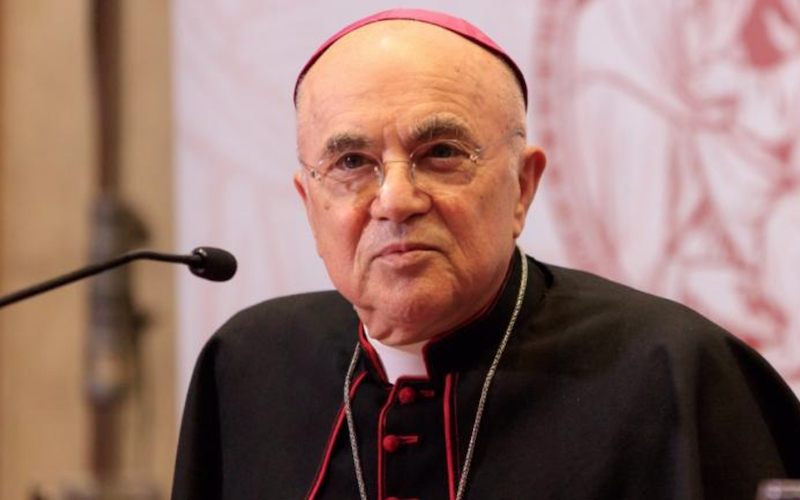Excommunication, unlike defrocking, does not remove clerical status but bars one from participating in sacraments.

On Friday, the Vatican excommunicated its former ambassador to Washington, Archbishop Carlo Maria Vigano, following his conviction of schism. Vigano, a staunch critic of Pope Francis and a polarizing figure within the Catholic Church, saw this as a foregone conclusion.
Once supported by the Vatican and U.S. church hierarchies, Vigano became increasingly isolated as he embraced conspiracy theories on topics ranging from the COVID-19 pandemic to the so-called “Great Reset” and the war in Ukraine. His extreme positions alienated many of his former allies.
Also Read:- Keir Starmer Becomes UK Prime Minister Amidst Conservative Rout in Labour Landslide
The Vatican’s doctrine office announced the excommunication after a meeting on Thursday, informing Vigano of the decision on Friday. The office cited Vigano’s public refusal to acknowledge the authority of the Pope, his rejection of communion with other church members, and his denial of the legitimacy of the Second Vatican Council.
Excommunication, unlike defrocking, does not remove clerical status but bars one from participating in sacraments. It is considered a “medicinal” penalty, meant to encourage repentance and reintegration into the church. Schisms, which have occurred throughout the church’s history, are particularly harmful as they threaten its unity.
Vigano’s critiques of the current church, widely disseminated through social media and aligned bloggers, highlight a deep rift between U.S. ultra-conservatives and Pope Francis. Initially, Vigano enjoyed mainstream support among bishops, but many distanced themselves as his views became more radical.
Vigano, who has not been seen publicly since before 2018, anticipated the schism declaration. He called it “an honor,” refused to appear or defend himself, and issued a statement rejecting the Vatican’s authority.
Also Read:- Rudy Giuliani Disbarred in New York for Election Fraud Lies, Faces Broad Legal Repercussions
On June 20, he publicly refused to recognize the Vatican’s doctrinal office’s authority, denouncing its members and the officials who appointed them. He did not respond directly to the excommunication on his usual platform, X (formerly Twitter), but announced he would be celebrating a Mass and solicited donations.
Vigano first gained public attention in 2012 during the Vatileaks scandal, where he exposed Vatican corruption. His efforts to prevent his transfer after exposing financial misconduct were unsuccessful, leading to his appointment as the Vatican’s ambassador to the U.S.
His conflict with Pope Francis escalated in 2015 when he arranged for Kim Davis, a controversial Kentucky clerk involved in the gay marriage debate, to meet the Pope. This incident strained his relationship with Francis, culminating in a public clash in 2018 when Vigano accused the Pope of covering up for Cardinal Theodore McCarrick amid the U.S. church’s sexual abuse scandal.
The Vatican’s subsequent investigation confirmed widespread misconduct by McCarrick but largely absolved Francis, who eventually defrocked McCarrick. The investigation also criticized Vigano for failing to act on new allegations against McCarrick.
Also Read:- Judge Declares Mistrial in High-Profile Karen Read Case Amid Juror Deadlock
In recent years, Vigano’s accusations became increasingly extreme, endorsing conspiracy theories, supporting Russia in the Ukraine war, and denying Francis’s legitimacy as Pope. His positions have caused some U.S. bishops to distance themselves, while inadvertently mainstreaming another schismatic group, the Society of St. Pius X (SSPX), which also rejects Vatican II reforms but does not deny Francis’s legitimacy.
Theologian Massimo Faggioli noted that Vigano’s radical stances have shifted perceptions, making the SSPX appear more moderate by comparison. This shift reflects broader changes within the church’s landscape post-Vatican II.
